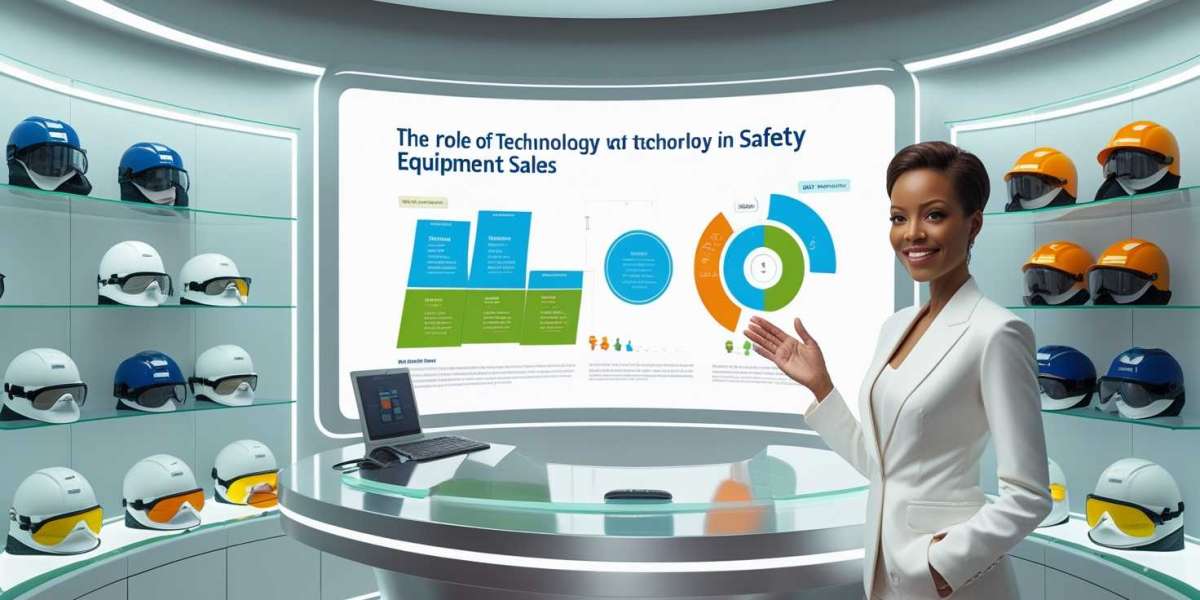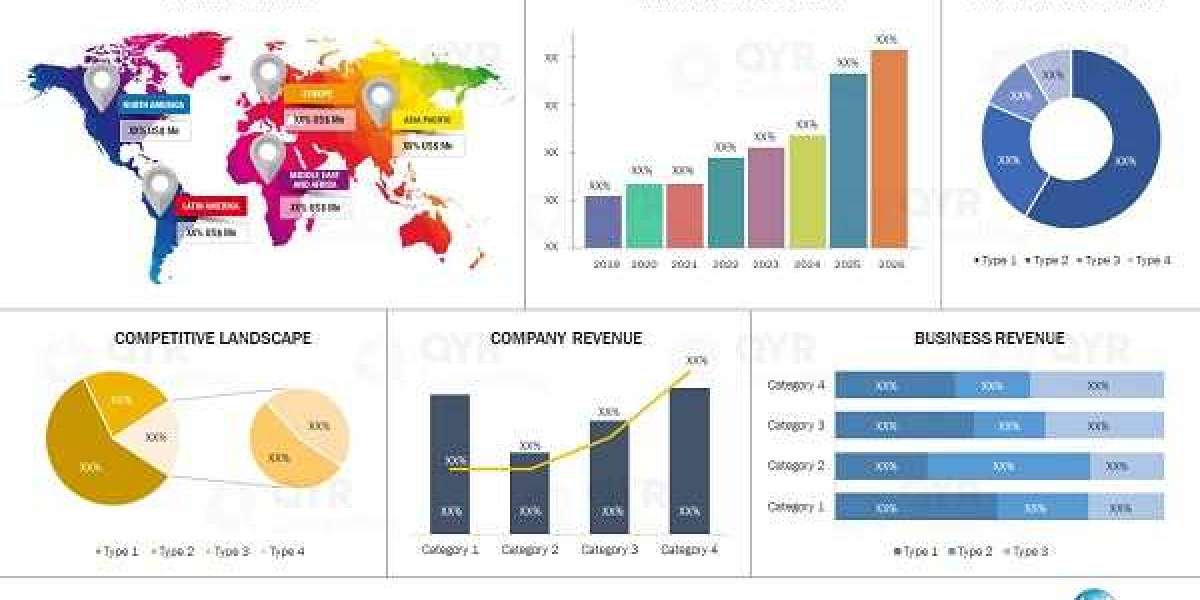The role of technology in safety equipment sales has undergone a significant transformation in recent years, revolutionizing the way safety products are marketed, sold, and utilized across various industries. This evolution has been driven by advancements in IoT, data analytics, and innovative features that enhance both the functionality and appeal of safety equipment.
In this article, we will explore the intersection of technology and safety equipment sales, delving into how these advancements have reshaped sales strategies, customer experiences, and market trends. By understanding the impact of technology on the safety equipment industry, we can better anticipate future developments and opportunities in this dynamic market.
Introduction to Safety Equipment Sales
Overview of Safety Equipment Industry
The safety equipment industry plays a crucial role in ensuring the well-being of workers across various sectors by providing protective gear and tools to prevent accidents and injuries.
Importance of Safety Equipment in Various Sectors
Safety equipment holds significant importance in industries such as construction, manufacturing, healthcare, and mining, where workers face potential risks daily. Proper safety gear not only protects workers but also boosts productivity and reduces downtime due to injuries.
Evolution of Technology in Safety Equipment
Historical Perspective on Safety Equipment Technology
From basic helmets and gloves to advanced respirators and smart safety vests, the evolution of safety equipment technology has been driven by the need for better protection and enhanced comfort for workers.
Key Technological Advancements in Safety Equipment
Technological advancements such as impact-resistant materials, wearable sensors for monitoring vital signs, and integrated communication systems have revolutionized the safety equipment industry, making work environments safer and more efficient.
Impact of Technology on Sales Strategies
Utilizing Technology for Marketing and Lead Generation
Incorporating technology in sales strategies, such as digital marketing campaigns and targeted lead generation through social media and online platforms, has allowed safety equipment companies to reach a wider audience and connect with potential customers more effectively.
Enhancing Sales Processes with Technology Integration
Integration of customer relationship management (CRM) systems, automation tools, and virtual reality demonstrations into sales processes has streamlined operations, improved customer engagement, and provided a more personalized experience for clients.
Integration of IoT and Data Analytics in Safety Equipment Sales
Role of IoT in Safety Equipment Monitoring and Management
The Internet of Things (IoT) enables real-time monitoring of safety equipment usage, maintenance needs, and environmental conditions, ensuring proactive measures can be taken to prevent accidents and equipment failures.
Benefits of Data Analytics in Predictive Maintenance and Sales Forecasting
Data analytics tools help safety equipment companies analyze trends, predict maintenance schedules, and forecast sales demands accurately. This proactive approach not only enhances operational efficiency but also ensures timely availability of safety gear to meet customer requirements.
Enhancing Customer Experience through Technology
Personalization and Customization in Safety Equipment Sales
Gone are the days of one-size-fits-all safety gear. Technology allows for personalized recommendations based on individual needs and preferences. Whether you're a hardcore adventurer or a casual safety-conscious consumer, there's a perfect fit for everyone.
Implementing User-Friendly Interfaces and Customer Support Systems
No one likes a complicated user interface. With technology, safety equipment sales can offer intuitive interfaces and seamless customer support systems. Say goodbye to confusing manuals and hello to hassle-free shopping experiences.
Trends and Innovations in Safety Equipment Technology
Emerging Technologies Impacting Safety Equipment Sales
From smart sensors that monitor your vital signs to wearable tech that alerts you to potential dangers, safety equipment is getting smarter. Embrace the future with tech that keeps you safe and stylish.
Innovative Features Driving Market Growth
Forget basic helmets and gloves. Today's safety gear comes with cutting-edge features like impact-resistant materials, climate control systems, and even built-in communication devices. Stay ahead of the game with gear that's as innovative as you are.
Challenges and Opportunities in Adopting Technology for Sales
Overcoming Resistance to Technological Change
Not everyone is quick to jump on the tech bandwagon. Overcome resistance by highlighting the benefits of technology in safety equipment sales, such as improved efficiency, accuracy, and customer satisfaction. Who knew tech could be so persuasive?
Opportunities for Collaboration and Partnerships in Technology Adoption
Two heads are better than one, especially in the world of technology. Collaborate with tech experts, manufacturers, and industry leaders to create a winning formula for success in safety equipment sales. It's like a high-tech superhero team-up, but for sales.
Future Outlook: Technology's Role in Shaping Safety Equipment Sales
Predictions for Future Technological Developments in Safety Equipment Sales
The future is bright for safety equipment sales, with advancements in AI, IoT, and wearable tech revolutionizing the industry. Get ready for a world where safety gear is not just a necessity, but a high-tech fashion statement.
The Evolution of Safety Equipment Sales
Traditional Sales Channels
Before the digital boom, safety equipment was sold predominantly through in-person channels such as retail stores, industry trade shows, and direct business-to-business (B2B) sales via field representatives. The process was manual and often slow, with buyers relying on catalogs and face-to-face consultations to understand product features and specifications.
Shift to Digital
The early 2000s brought a wave of digital transformation. E-commerce began to replace traditional B2B sales methods, making it easier for businesses to compare products, read reviews, and place bulk orders online. Websites with detailed product descriptions and certifications helped build trust and transparency. By the 2010s, digital became the dominant force in the sales journey—supported by CRM platforms, AI-driven personalization, and marketing automation.
E-Commerce and Online Marketplaces
E-commerce has perhaps had the most profound impact on safety equipment sales. Platforms like Amazon Business, Grainger, Fastenal, and niche safety equipment sites have revolutionized the buying process.
Benefits of E-Commerce in Safety Equipment Sales
- Wider Reach: Companies can now serve customers worldwide.
- 24/7 Accessibility: Online stores are always open.
- Bulk Ordering Tools: Tailored portals for repeat B2B clients simplify procurement.
- Transparent Comparisons: Customers can easily compare prices, brands, and specifications.
- Digital Catalogs: Constantly updated with certifications, datasheets, and compliance info.
B2B Customization
Many safety suppliers offer customizable enterprise portals. These allow corporate buyers to manage inventory levels, track previous orders, and reorder based on automated thresholds. Integrating purchasing with ERP systems also streamlines the procurement process, reducing manual errors and delays.
Smart Technology and IoT in Safety Products
Technology isn’t just transforming how safety equipment is sold—it's also reshaping the products themselves.
Connected Safety Gear
IoT (Internet of Things) has enabled the creation of "smart" PPE (Personal Protective Equipment) like:
- Wearable sensors that monitor vitals or environmental hazards.
- Smart helmets with augmented reality (AR) overlays for real-time guidance.
- Gas detectors connected to cloud platforms for remote monitoring.
- Fall detection systems that send alerts in emergencies.
Sales strategies for these products require more technical sales knowledge, often supported by virtual demos or digital onboarding.
Software-as-a-Service (SaaS) Add-Ons
Many modern safety devices are sold alongside subscription-based services. Sales teams must now pitch not only the product but also the data platform that powers it. Think of it as PPE meets SaaS—buyers want both physical protection and digital intelligence.
Digital Marketing and Lead Generation
Digital marketing has become central to safety equipment sales. Traditional cold-calling has been largely replaced or supplemented by inbound strategies like content marketing, paid search, and email automation.
Search Engine Optimization (SEO)
Because buyers often start with a Google search, SEO is crucial. Distributors and manufacturers compete for visibility by optimizing content around key phrases like:
- “OSHA compliant hard hats”
- “Buy safety gloves online”
- “Fall protection equipment suppliers”
Well-optimized websites with blogs, case studies, and buyer guides can rank higher and attract more qualified leads.
PPC and Programmatic Ads
Pay-per-click (PPC) ads and programmatic advertising help companies target specific roles (like safety managers or procurement officers) with tailored messages. Retargeting ads also keep products top-of-mind for customers who previously visited the site.
Email Automation
Platforms like HubSpot, Mailchimp, and Salesforce Pardot allow sales teams to build personalized drip campaigns, nurturing leads through the buying journey with relevant content and offers.
Virtual Demonstrations and AR/VR
Safety equipment often requires some form of hands-on demonstration, especially for complex or high-tech gear. Technology has stepped in to meet this need remotely.
Virtual Demos
Tools like Zoom, Microsoft Teams, and Loom are commonly used for real-time product walkthroughs. Reps can now guide clients through product features, setup, and use cases from anywhere in the world.
Augmented and Virtual Reality
Some companies are investing in AR/VR to simulate real-world usage scenarios. For example:
- A VR headset can place a customer inside a construction site to see how a safety harness performs.
- AR glasses might show live data from a smart device, simulating field use.
These immersive experiences build trust and understanding, reducing return rates and increasing customer satisfaction.
6. CRM and Data Analytics in the Sales Cycle
Customer Relationship Management (CRM) tools like Salesforce, Zoho, or Microsoft Dynamics play a pivotal role in streamlining safety equipment sales.
CRM Capabilities
- Pipeline tracking: Follow deals through each sales stage.
- Account-based marketing: Personalize outreach for major clients.
- Sales forecasting: Use AI to predict close rates and inventory needs.
- Integration: Connect CRM with ERP, e-commerce, and customer support platforms.
Data Analytics
Sales data reveals insights into buying cycles, seasonality, product performance, and customer behavior. These insights can:
- Help optimize pricing strategies.
- Inform upselling or cross-selling opportunities.
- Tailor marketing campaigns based on client segments.
- Improve product recommendations.
Automation and AI in Operations
Automation and AI tools are helping safety equipment sellers streamline repetitive tasks and improve efficiency.
Chatbots and AI Assistants
AI chatbots can:
- Answer FAQs about compliance or materials.
- Assist with product selection.
- Route complex inquiries to human reps.
Inventory and Order Automation
Automated systems can manage stock levels, send restock alerts, and initiate purchase orders. This minimizes human error and improves delivery times.
AI for Personalization
Machine learning algorithms suggest products based on past purchases, industry, or risk profiles—turning websites into smart selling platforms.
8. Cybersecurity and Compliance
As more sales activities move online, cybersecurity and data protection become crucial—especially in sectors where safety equipment is used in sensitive or regulated environments.
Key Considerations
- Secure checkout and encrypted payment systems.
- Data compliance with GDPR, CCPA, and local regulations.
- Multi-factor authentication (MFA) for enterprise portals.
- Access controls for confidential purchasing data.
Vendors who demonstrate strong cybersecurity practices earn more trust and long-term business relationships.
9. Sustainability and Transparency Through Tech
Technology also enables better transparency about where and how safety equipment is made—a growing concern among eco-conscious buyers.
- Blockchain can trace materials from origin to delivery.
- Digital product passports offer full documentation and lifecycle data.
- Sustainability scores help buyers choose environmentally responsible options.
This transparency becomes a powerful sales tool, especially when selling to corporations with ESG goals.
10. The Future of Safety Equipment Sales
As technology continues to evolve, safety equipment sales will become even more intelligent, automated, and user-centric. Trends to watch include:
- AI-powered procurement bots that make purchasing decisions automatically.
- Fully immersive digital showrooms for product exploration.
- Predictive safety solutions, where smart gear anticipates risks before they occur.
- Voice commerce, especially for on-the-go purchasing on job sites.
Ultimately, technology will not replace human sales reps—it will empower them. The best sellers will be those who leverage digital tools to offer more value, better support, and smarter solutions.
Conclusion
From digitized catalogs and automated warehouses to smart PPE and immersive demos, technology has completely redefined how safety equipment is bought and sold. Sales today are no longer about just closing deals—they’re about building partnerships, enhancing safety outcomes, and using data to make smarter decisions.
Safety Equipment Sales move further into a connected, digital-first future, businesses that invest in these technologies—and train their teams to use them effectively—will be best positioned to lead in the safety equipment industry.











